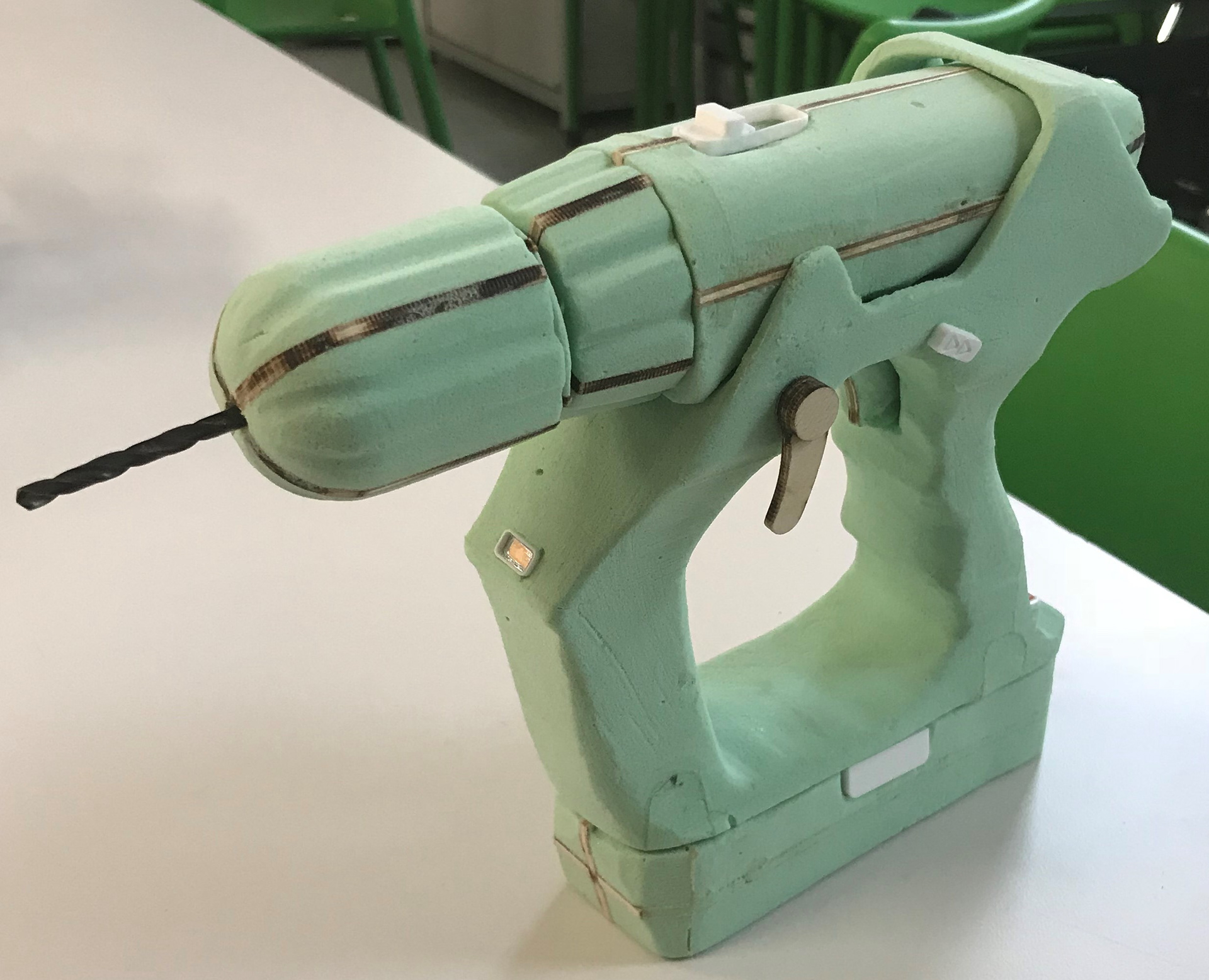Brief: Design and create a cordless drill basing the dimensions and feel of the product around human ergonomics and anthropometrics. This human centred design project will help create an understanding of how humans react to products, especially ones which are new to the market and have not been seen by the human eye before. A great amount of testing is required, this includes testing the; handling, weight distribution, size and overall weight. A 1:1 scale 'proof of principle prototype' of the final design will need to be produced which demonstrates form and format. This is not intended to communicate surface finishes but should demonstrate appropriate weight in the correct areas.
To invent a new, more stylish and useful product. A combination of a cordless drill and an oscillating power tool will be made into one product - the perfect tool for an everyday carpenter.

These were the first initial sketches for the shape of the handle and form of the product.
Physical models were created after reverse engineering an existing cordless drill, this would then give an understanding of where the weight is distributed.
Below is the development of the chosen idea - being the cordless drill combo. This was created through the development of the previous models.
Stages of making the prototype.
Key features: 3 speed gearbox ensures a powerful force whilst drilling, indentations on the chuck allow for perfect handling and affordance, integrated LED for illuminating the work area, the oscillating power tool attaches to prongs at the back of the hollow socket, CAM locking mechanism locks the oscillating tool in place, spirit level for machining straight, three point switch for changing the speed and a removable key less chuck to take advantage of the smaller chuck beneath.
Advert for the product stating all of the key features.
2D illustrations were created using adobe illustrator, this communicates the idea for the colours of the product since this was only a 'proof of principle' model which did not need finishing. A contrasting colour was used for the areas of interaction.